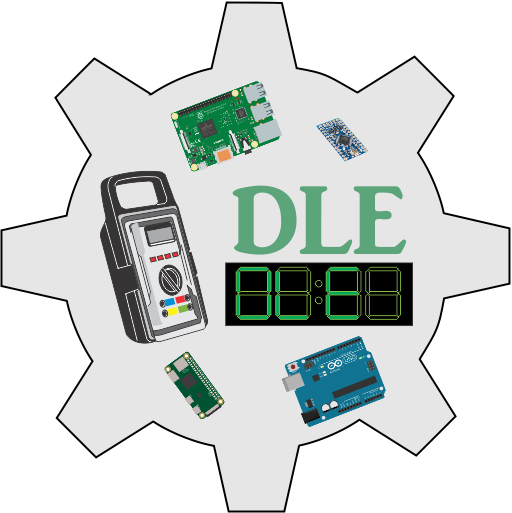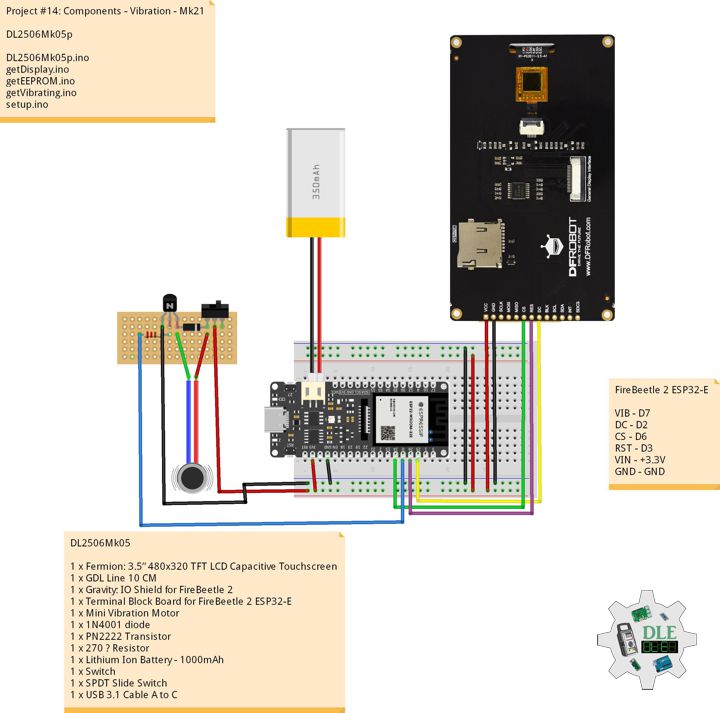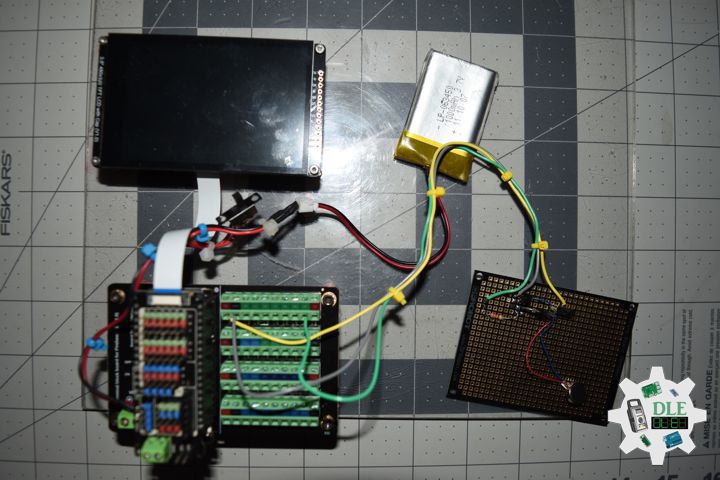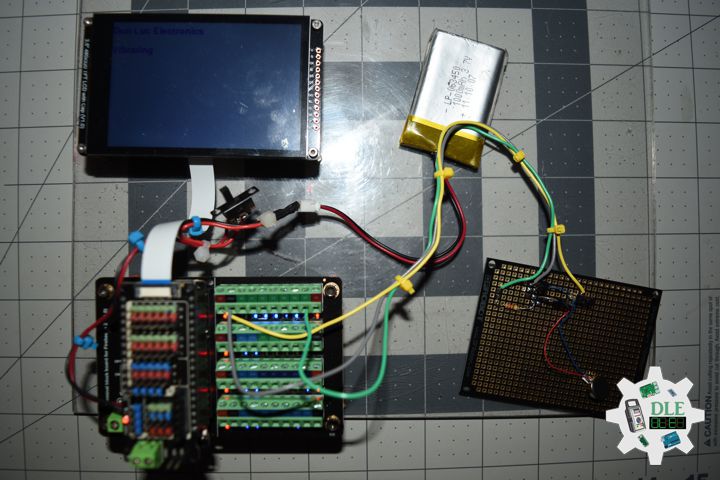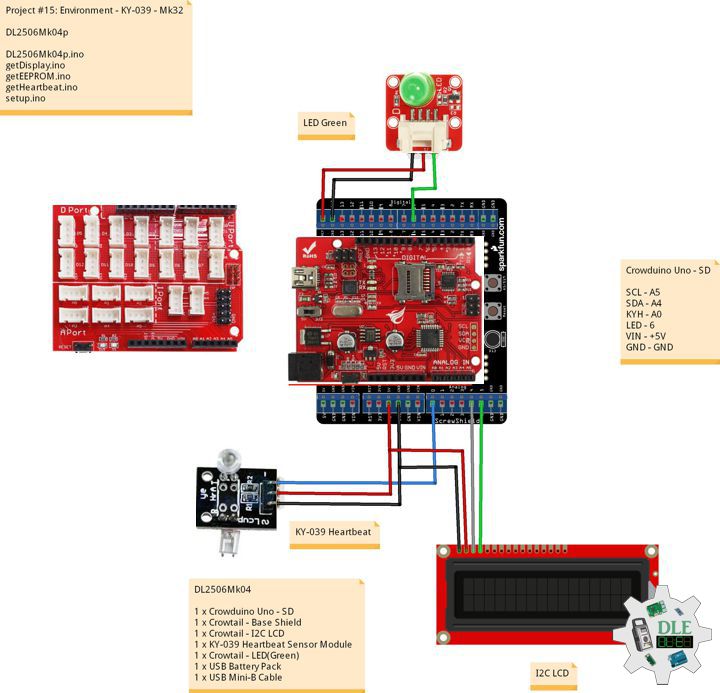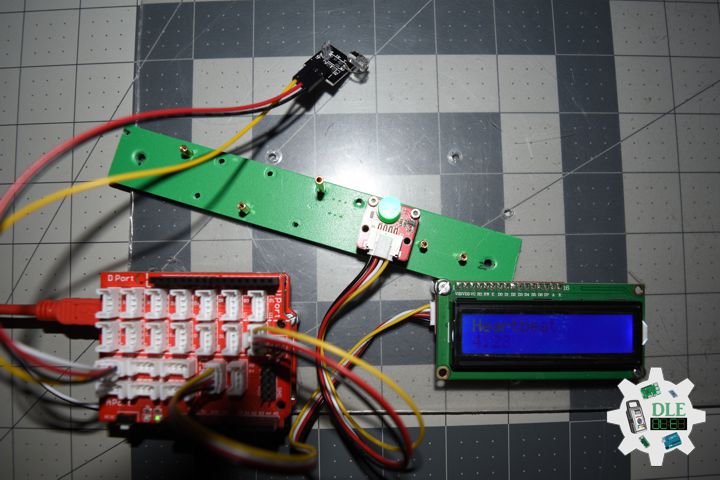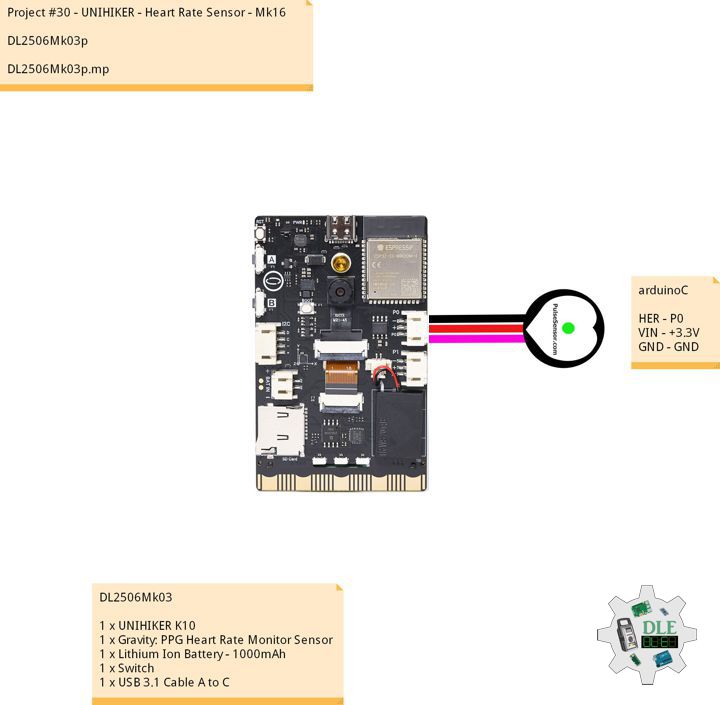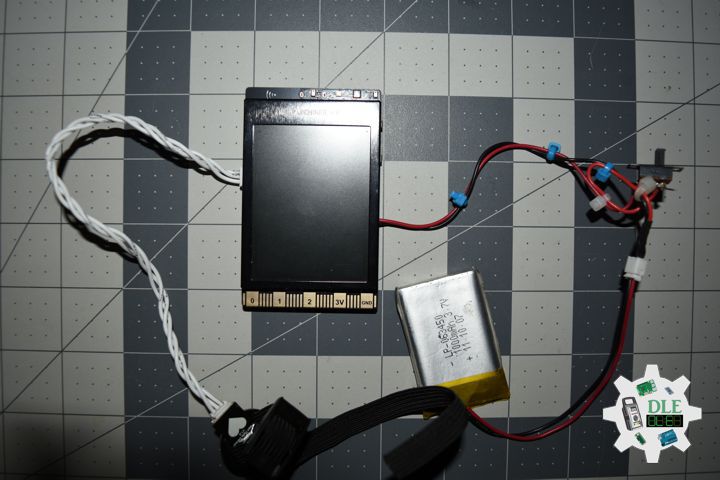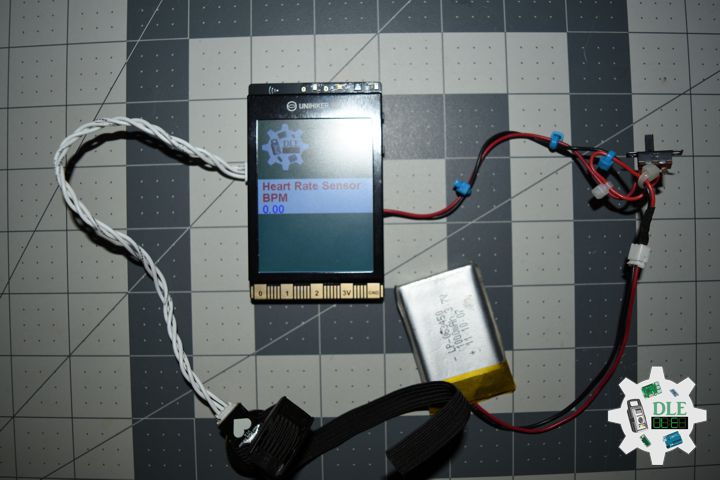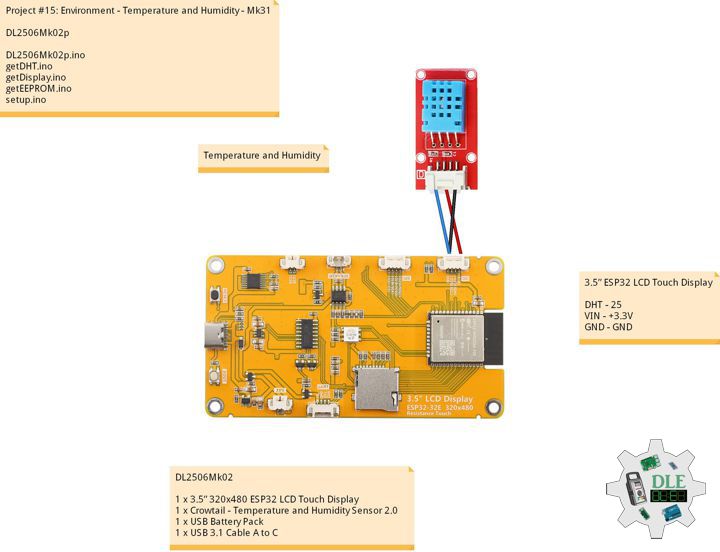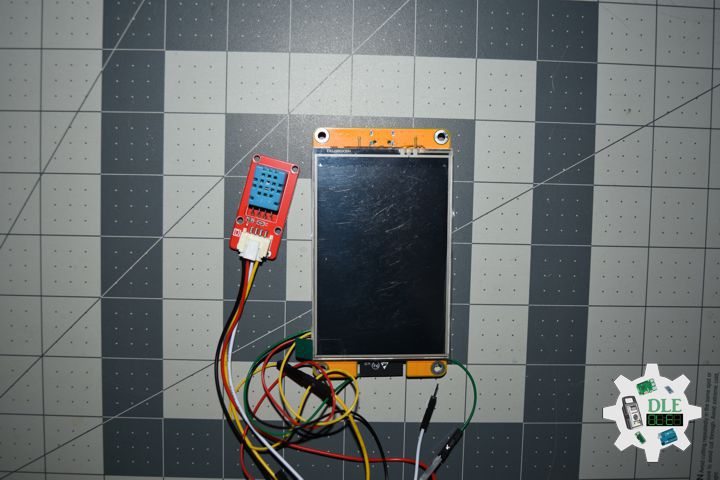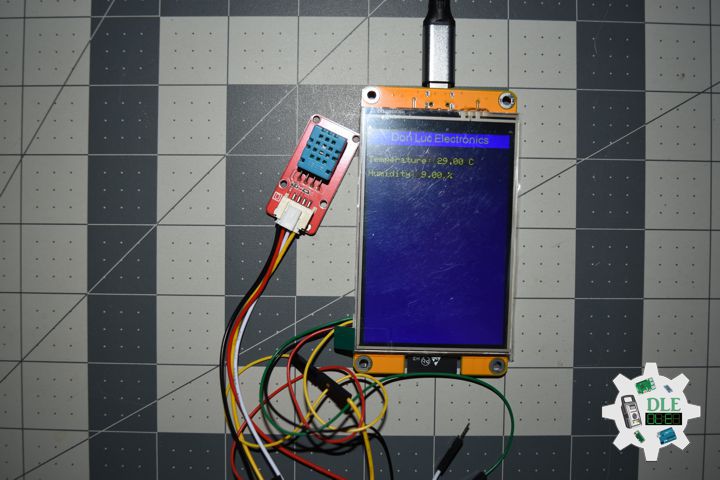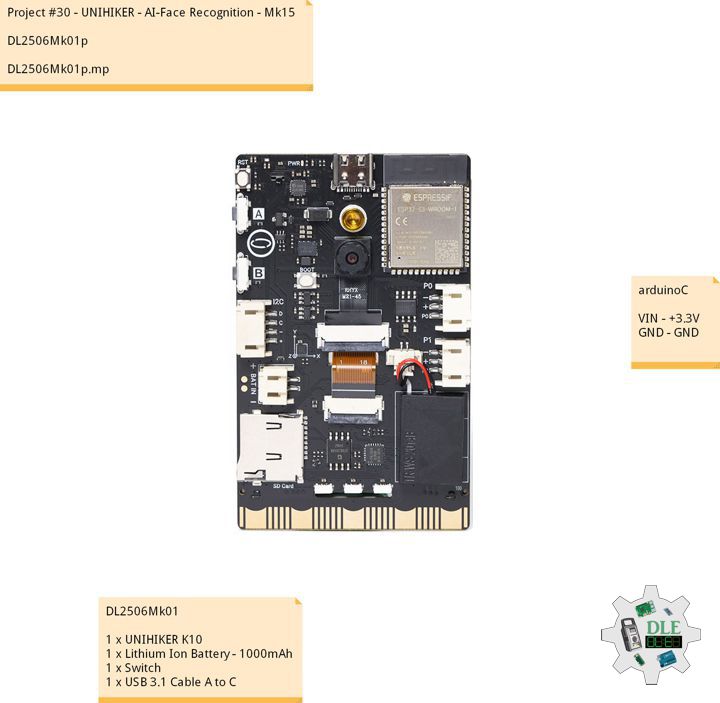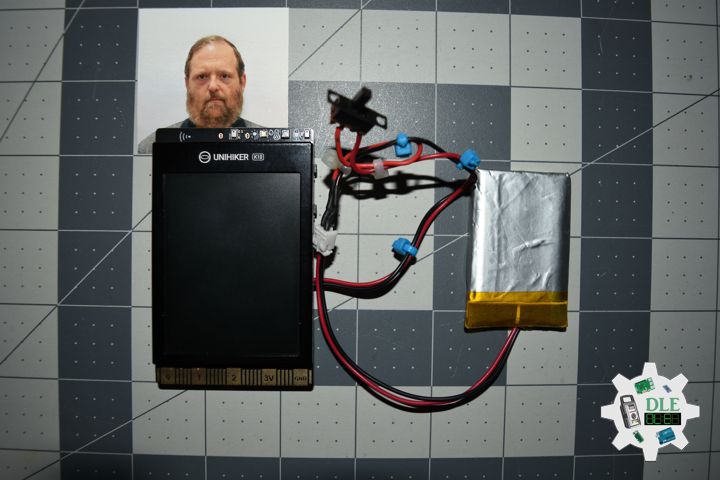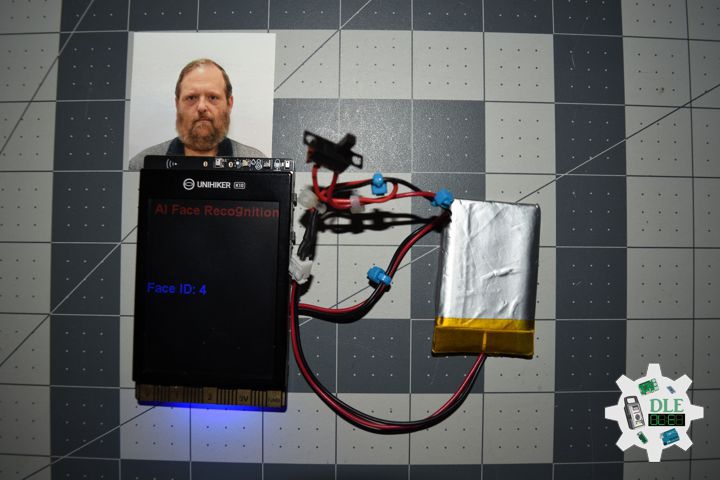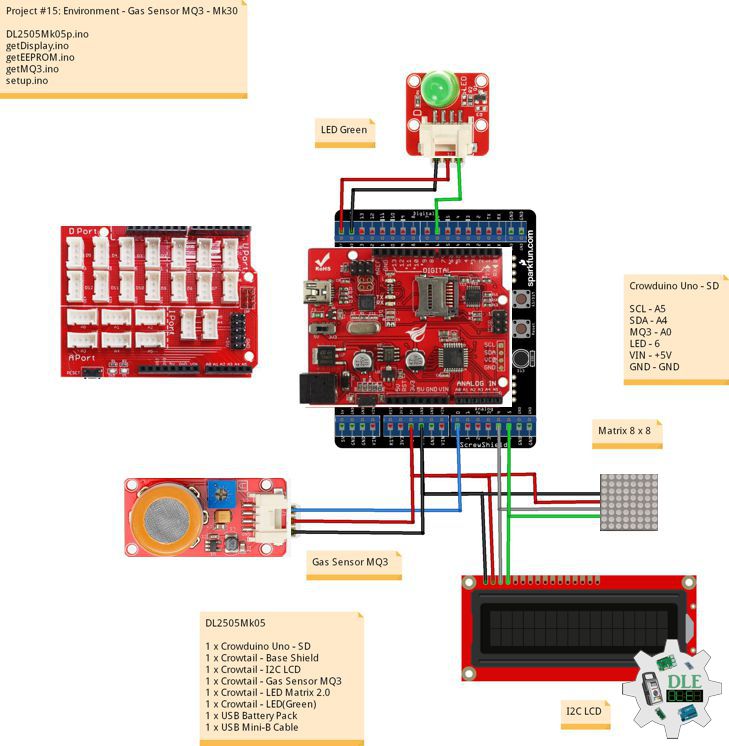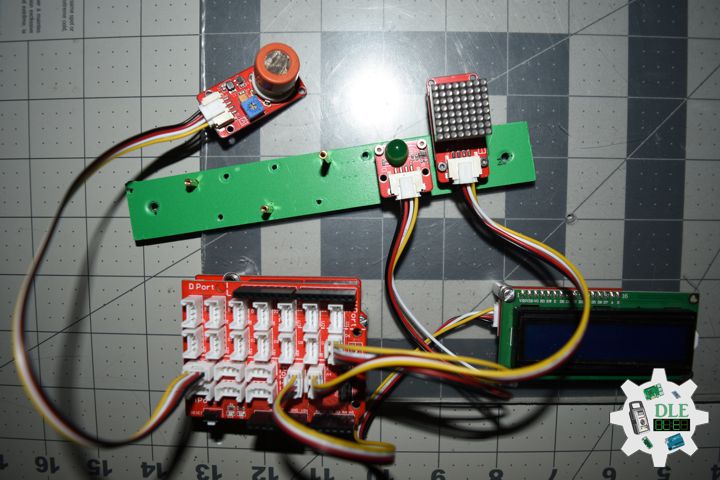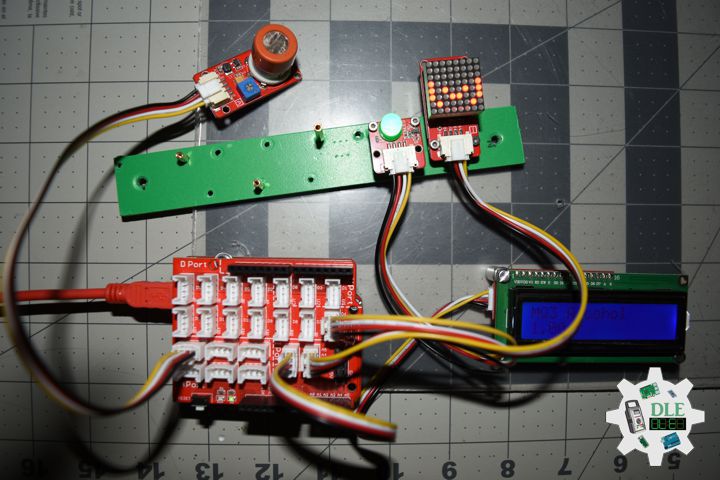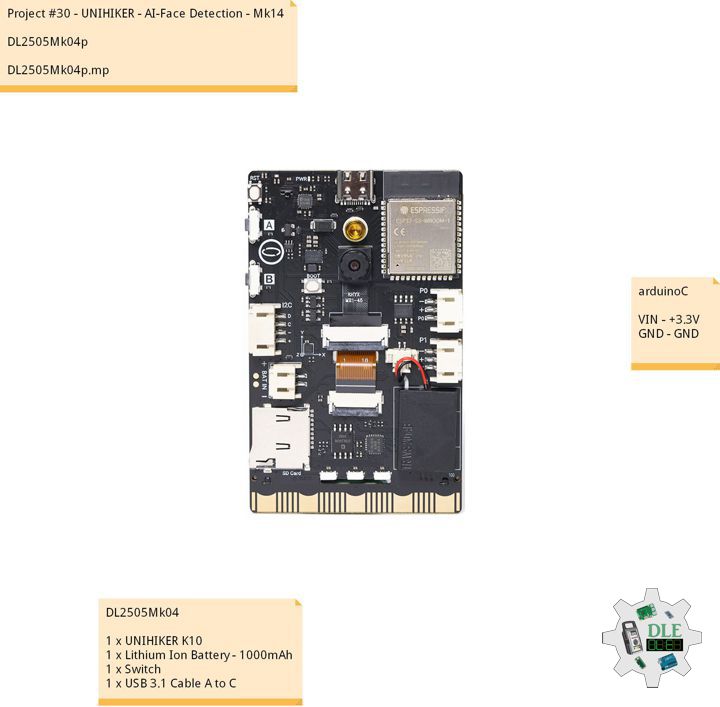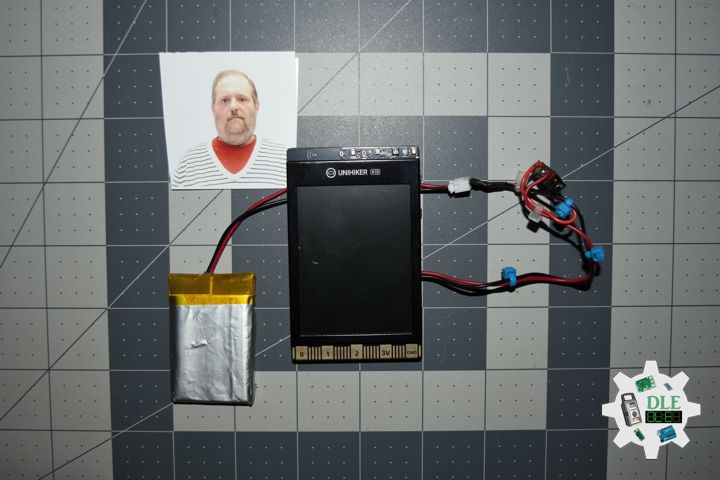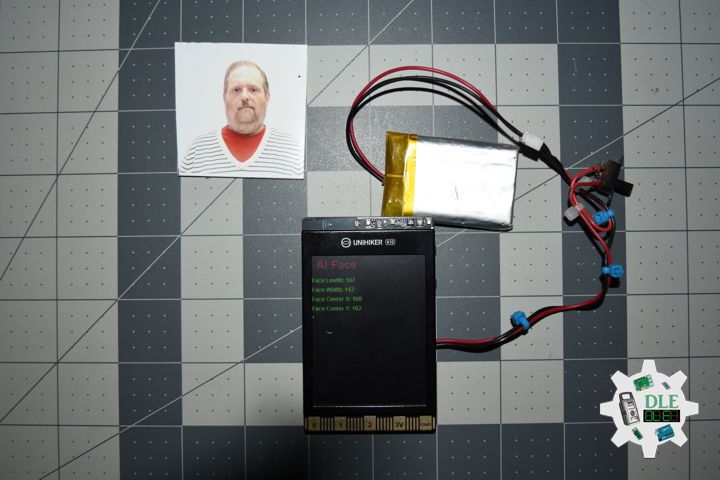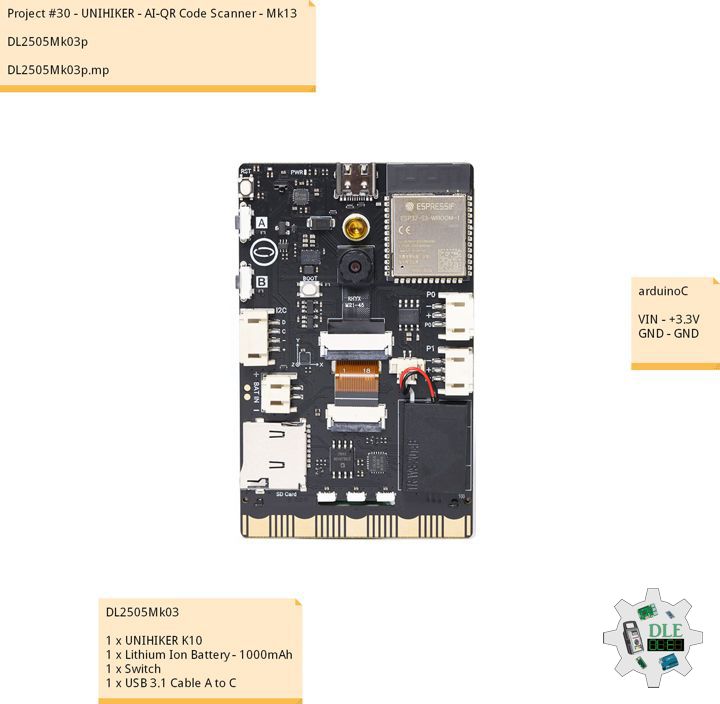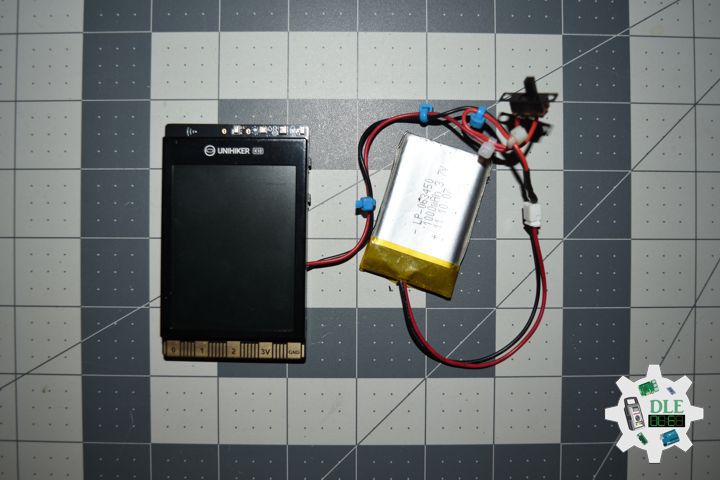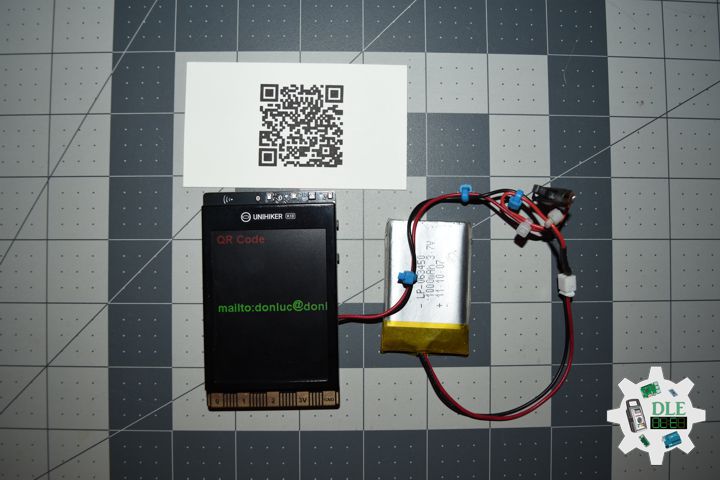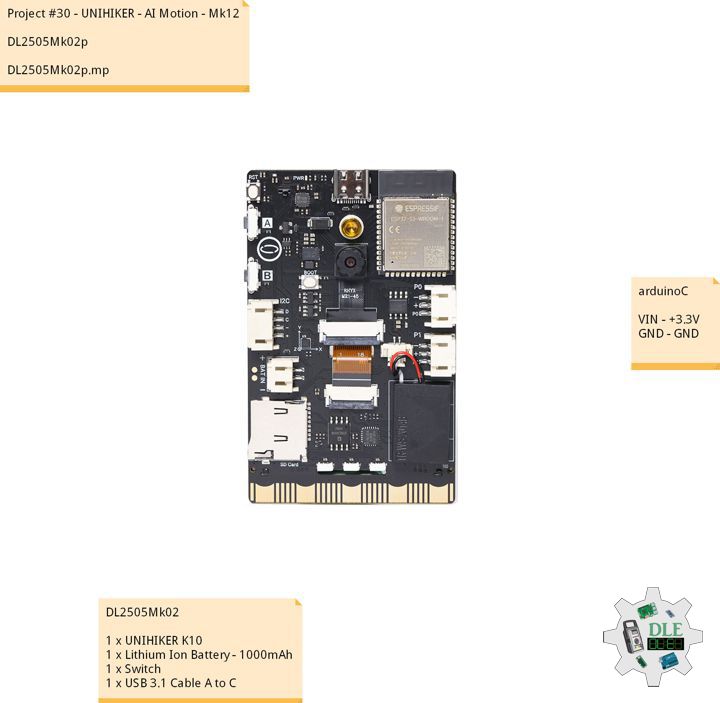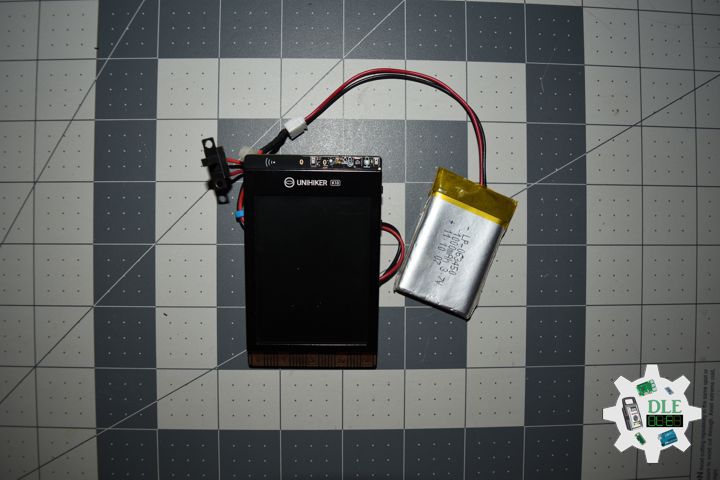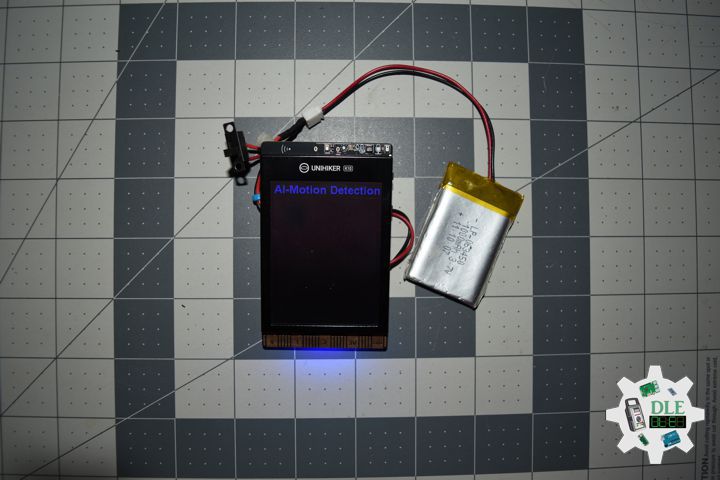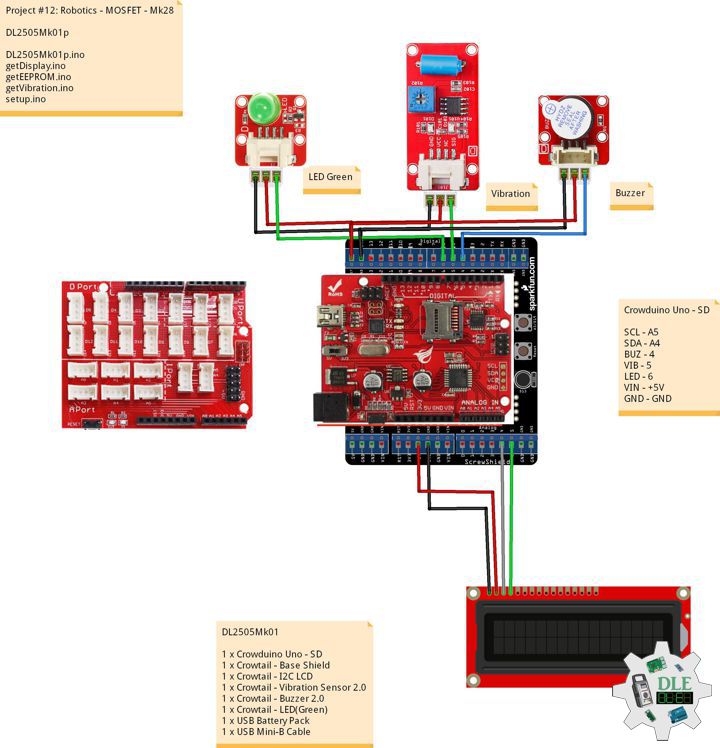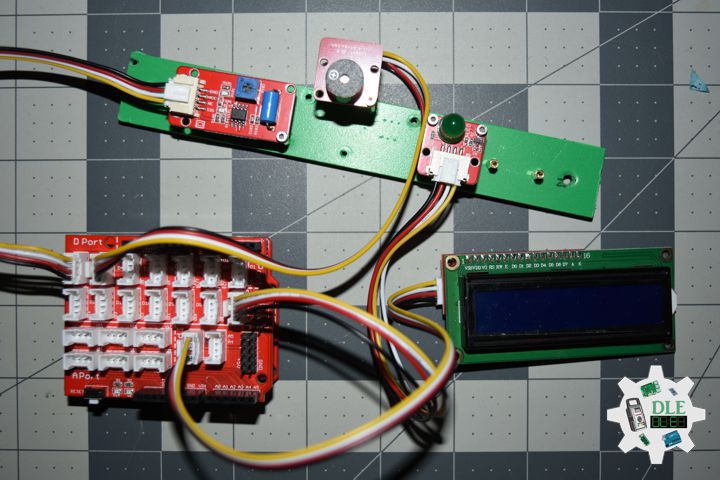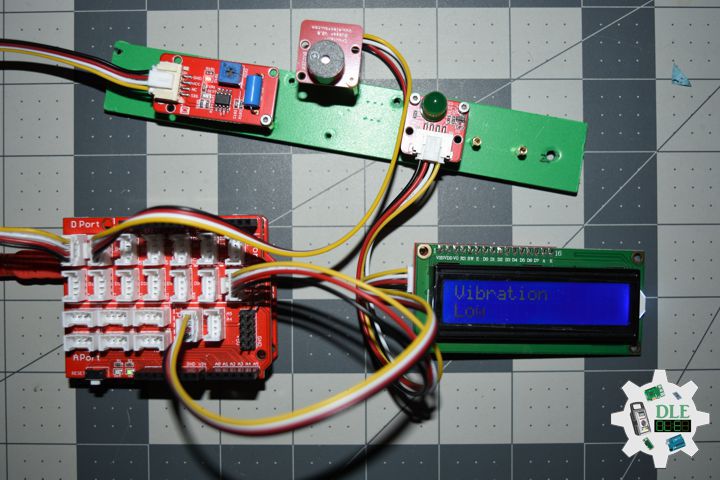——
#DonLucElectronics #DonLuc #Vibration #DFRobot #Display #IoT #Project #Fritzing #Programming #Electronics #Microcontrollers #Consultant
——
——
——
——
Mini Vibration Motor
Just as small as a fingernail, this 10*2.7mm mini vibration motor features a strong vibration, low noise, easy to embed, and long lifespan. Powered by voltage from 1.5V to 4.2V, it will vibrate once powered on, and the higher the voltage is, the faster the vibration frequency will be. It is widely applicable to projects like mobile phones, watches, facial massager, electric toys, etc.
DL2506Mk05
1 x DFRobot FireBeetle 2 ESP32-E
1 x Fermion: 3.5” 480×320 TFT LCD Capacitive Touchscreen
1 x GDL Line 10 CM
1 x Gravity: IO Shield for FireBeetle 2
1 x Terminal Block Board for FireBeetle 2 ESP32-E
1 x Mini Vibration Motor
1 x 1N4001 diode
1 x PN2222 Transistor
1 x 270 Ohm Resistor
1 x Lithium Ion Battery – 1000mAh
1 x Switch
1 x SPDT Slide Switch
1 x USB 3.1 Cable A to C
FireBeetle 2 ESP32-E
VIB – D7
DC – D2
CS – D6
RST – D3
VIN – +3.3V
GND – GND
DL2506Mk05p
DL2506Mk05p.ino
/****** Don Luc Electronics © ******
Project #14: Components - Vibration - Mk21
14-21
DL2506Mk05p.ino
DL2506Mk05
1 x DFRobot FireBeetle 2 ESP32-E
1 x Fermion: 3.5” 480x320 TFT LCD Capacitive Touchscreen
1 x GDL Line 10 CM
1 x Gravity: IO Shield for FireBeetle 2
1 x Terminal Block Board for FireBeetle 2 ESP32-E
1 x Mini Vibration Motor
1 x 1N4001 diode
1 x PN2222 Transistor
1 x 270 Ω Resistor
1 x Lithium Ion Battery - 1000mAh
1 x Switch
1 x SPDT Slide Switch
1 x USB 3.1 Cable A to C
*/
// Include the Library Code
// EEPROM Library to Read and Write EEPROM
// with Unique ID for Unit
#include "EEPROM.h"
// Arduino
#include <Arduino.h>
// DFRobot Display GDL API
#include <DFRobot_GDL.h>
// Vibrating
int iVibratingPin = D7;
// Speed 0 => 1500
int iSpeed = 0;
// Defined ESP32
#define TFT_DC D2
#define TFT_CS D6
#define TFT_RST D3
/*dc=*/ /*cs=*/ /*rst=*/
// DFRobot Display 320x480
DFRobot_ILI9488_320x480_HW_SPI screen(TFT_DC, TFT_CS, TFT_RST);
// EEPROM Unique ID Information
#define EEPROM_SIZE 64
String uid = "";
// Software Version Information
String sver = "14-21";
void loop() {
// isVibrating
isVibrating();
// Display Vibration
isDisplayVibration();
delay(100);
}
getDisplay.ino
// DFRobot Display 3.5” 480x320
// DFRobot Display 3.5” 480x320 - UID
void isDisplayUID(){
// DFRobot Display 240x320
// Text Display
// Text Wrap
screen.setTextWrap(false);
// Rotation
screen.setRotation(3);
// Fill Screen => black
screen.fillScreen(0x0000);
// Text Color => white
screen.setTextColor(0xffff);
// Font => Free Sans Bold 12pt
screen.setFont(&FreeSansBold12pt7b);
// TextSize => 1.5
screen.setTextSize(1.5);
// Don Luc Electronics
screen.setCursor(0, 30);
screen.println("Don Luc Electronics");
// SD
screen.setCursor(0, 60);
screen.println("Vibration");
// Version
screen.setCursor(0, 90);
screen.println("Version");
screen.setCursor(0, 120);
screen.println( sver );
// EEPROM
screen.setCursor(0, 150);
screen.println("EEPROM");
screen.setCursor(0, 180);
screen.println( uid );
}
// Display Vibration
void isDisplayVibration(){
// DFRobot Display 240x320
// Text Display
// Text Wrap
screen.setTextWrap(false);
// Rotation
screen.setRotation(3);
// Fill Screen => white
screen.fillScreen(0xffff);
// Text Color => blue
screen.setTextColor(0x001F);
// Font => Free Sans Bold 12pt
screen.setFont(&FreeSansBold12pt7b);
// TextSize => 1.5
screen.setTextSize(1.5);
// EMG
screen.setCursor(0, 30);
screen.println("Don Luc Electronics");
// EMG Value
screen.setCursor(0, 80);
screen.println("Vibrating");
}
getEEPROM.ino
// EEPROM
// isUID EEPROM Unique ID
void isUID() {
// Is Unit ID
uid = "";
for (int x = 0; x < 7; x++)
{
uid = uid + char(EEPROM.read(x));
}
}
getVibrating.ino
// Vibrating
// isVibrating
void isVibrating() {
// Speed 0 => 1500
iSpeed = 0;
// Vibrating
if (iSpeed >= 0 && iSpeed <= 1500)
{
analogWrite(iVibratingPin, iSpeed);
}
}
setup.ino
// Setup
void setup()
{
// Delay
delay( 100 );
// EEPROM Size
EEPROM.begin(EEPROM_SIZE);
// EEPROM Unique ID
isUID();
// Delay
delay(100);
// Vibrating Pin
pinMode(iVibratingPin, OUTPUT);
// Delay
delay(100);
// DFRobot Display 3.5” 480x320
screen.begin();
// // DFRobot Display 3.5” 480x320
// Don Luc Electronics
// Vibrating
// Version
// EEPROM
isDisplayUID();
// Delay 5 Second
delay( 5000 );
}
——
People can contact us: https://www.donluc.com/?page_id=1927
Electronics, IoT, Teacher, Instructor, R&D and Consulting
- Programming Language
- Single-Board Microcontrollers (PIC, Arduino, Raspberry Pi, Arm, Silicon Labs, Espressif, Etc…)
- IoT
- Wireless (Radio Frequency, Bluetooth, WiFi, Etc…)
- Robotics
- Automation
- Camera and Video Capture Receiver Stationary, Wheel/Tank and Underwater Vehicle
- Unmanned Vehicles Terrestrial and Marine
- Machine Learning
- Artificial Intelligence (AI)
- RTOS
- Sensors, eHealth Sensors, Biosensor, and Biometric
- Research & Development (R & D)
- Consulting
Follow Us
Luc Paquin – Curriculum Vitae – 2024
https://www.donluc.com/luc/
Web: https://www.donluc.com/
Facebook: https://www.facebook.com/neosteam.labs.9/
YouTube: https://www.youtube.com/@thesass2063
Twitter: https://twitter.com/labs_steam
Pinterest: https://www.pinterest.com/NeoSteamLabs/
Instagram: https://www.instagram.com/neosteamlabs/
Patreon: https://patreon.com/DonLucElectronics59
DFRobot: https://learn.dfrobot.com/user-10186.html
Hackster.io: https://www.hackster.io/neosteam-labs
Elecrow: https://www.elecrow.com/share/sharepj/center/no/760816d385ebb1edc0732fd873bfbf13
TikTok: https://www.tiktok.com/@luc.paquin8
Twitch: https://www.twitch.tv/lucpaquin
Hackster: https://www.hackster.io/luc-paquin
LinkedIn: https://www.linkedin.com/in/jlucpaquin/
Don Luc
